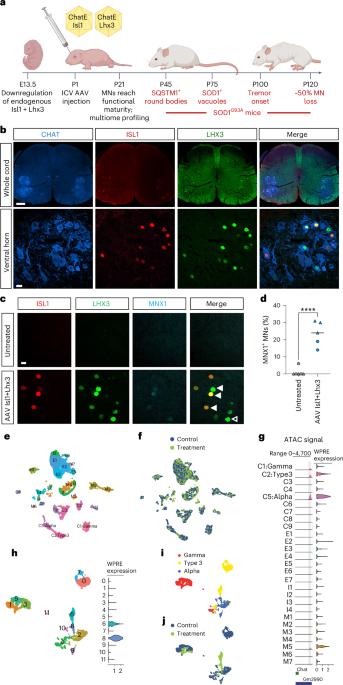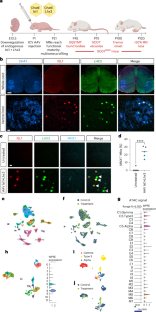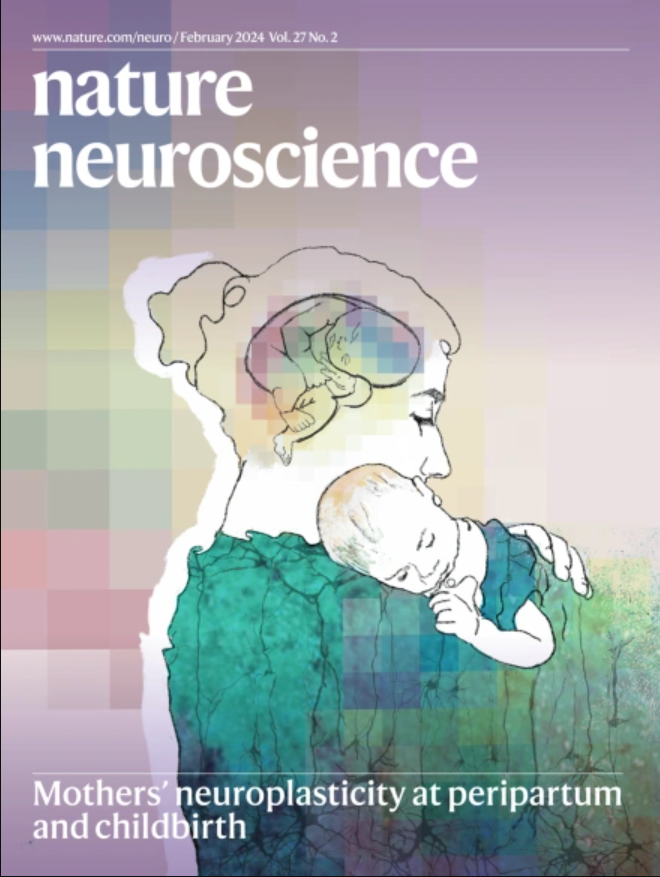胚胎运动神经元编程因子重新激活未成熟基因表达并抑制出生后运动神经元的ALS病理
IF 20
1区 医学
Q1 NEUROSCIENCES
引用次数: 0
摘要
衰老是肌萎缩性侧索硬化症(ALS)和其他成人发病的神经退行性疾病的主要危险因素。虽然年轻的神经元有能力缓冲引起疾病的压力,但成熟的神经元会随着时间的推移失去这种能力并退化。我们假设通过重新表达胚胎运动神经元选择转录因子ISL1和LHX3可以恢复年轻运动神经元的弹性。我们发现,在SOD1G93A ALS小鼠模型中,ISL1和LHX3在出生后运动神经元中选择性的病毒重表达重新激活了它们年轻时基因表达程序的各个方面,并缓解了关键的疾病相关表型。我们的研究结果表明,谱系特异性神经元选择转录因子的重新部署可能是一种有效的策略,以减轻神经退行性疾病的年龄依赖性表型。本文章由计算机程序翻译,如有差异,请以英文原文为准。


Embryonic motor neuron programming factors reactivate immature gene expression and suppress ALS pathologies in postnatal motor neurons
Aging is a major risk factor in amyotrophic lateral sclerosis (ALS) and other adult-onset neurodegenerative disorders. Whereas young neurons are capable of buffering disease-causing stresses, mature neurons lose this ability and degenerate over time. We hypothesized that the resilience of young motor neurons could be restored by reexpression of the embryonic motor neuron selector transcription factors ISL1 and LHX3. We found that viral reexpression of ISL1 and LHX3 selectively in postnatal motor neurons reactivates aspects of their youthful gene expression program and alleviates key disease-relevant phenotypes in the SOD1G93A mouse model of ALS. Our results suggest that redeployment of lineage-specific neuronal selector transcription factors can be an effective strategy to attenuate age-dependent phenotypes in neurodegenerative disease. Lowry et al. use embryonic motor neuron selector transcription factors to partially rejuvenate the gene expression profile of mature neurons, making them more resistant to an ALS model without compromising their normal function.
求助全文
通过发布文献求助,成功后即可免费获取论文全文。
去求助
来源期刊

Nature neuroscience
医学-神经科学
CiteScore
38.60
自引率
1.20%
发文量
212
审稿时长
1 months
期刊介绍:
Nature Neuroscience, a multidisciplinary journal, publishes papers of the utmost quality and significance across all realms of neuroscience. The editors welcome contributions spanning molecular, cellular, systems, and cognitive neuroscience, along with psychophysics, computational modeling, and nervous system disorders. While no area is off-limits, studies offering fundamental insights into nervous system function receive priority.
The journal offers high visibility to both readers and authors, fostering interdisciplinary communication and accessibility to a broad audience. It maintains high standards of copy editing and production, rigorous peer review, rapid publication, and operates independently from academic societies and other vested interests.
In addition to primary research, Nature Neuroscience features news and views, reviews, editorials, commentaries, perspectives, book reviews, and correspondence, aiming to serve as the voice of the global neuroscience community.
 求助内容:
求助内容: 应助结果提醒方式:
应助结果提醒方式:


